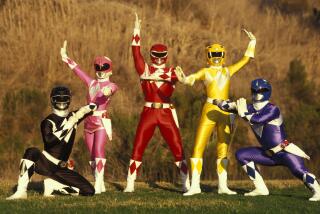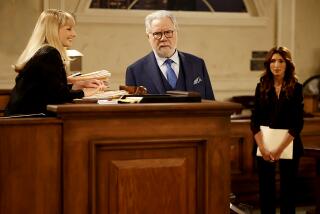Appreciation: How BET’s ‘106 & Park’ shaped a teen’s life
As a black teenager with an affinity for pop music but raised on R&B and hip-hop, I considered BET’s “106 & Park” essential viewing.
Before “106 & Park” -- which ended a remarkable 14-year run on Friday -- arrived in 2000, MTV’s wildly popular “Total Request Live” was the go-to after-school fix.
The MTV show was a can’t miss for a kid who fully subscribed to everything percolating out of the great teen-pop explosion toward the end of the millennium. Backstreet Boys, ‘N Sync, Britney Spears, Christina Aguilera, Mandy Moore, 98 Degrees, Jessica Simpson -- “TRL” fed my insatiable love of pop hooks and sleek videos.
But something was always missing. When “106 & Park” arrived, I knew what had been absent.
By then, BET had already been in the business of spinning videos. The station even had a sassy virtual reality character who served up videos with a constant dose of shade on “Cita’s World” (BET still doesn’t get credit for the ground it broke there). Before that, “Video Soul” served as my earliest entry into what was happening in black music and the artists I didn’t always see featured on MTV.
“106 & Park,” however, scratched beneath the surface of just doling out popular music videos. It offered something deeper for myself and teenagers like me across the country.
This was the only show where the audience looked just like me and kids I knew -- and was packed with the rising R&B and hip-hop talents I crushed on, as well as the stars who already mattered to me.
With “106,” artists like Jagged Edge, Ginuwine, Avant, Ja Rule, Mya, Ashanti and B2K could shine just as brightly as Nelly, Aaliyah, Brandy, Usher, Jay Z, Beyoncé and any other R&B/rap act that had already captivated pop audiences.
While “106” stayed true to the video countdown formula, with interviews and performances spliced in-between, it did so with an unbeatable swag.
Original hosts A.J. Colloway and Free were fresh, edgy and embodied an effortless cool. Their passion for the music showed and their chemistry was ferocious. They became integral staples in your everyday life, and tears were shed during Colloway’s emotional announcement that he and Free would exit in 2005, five years into the show’s run.
My memories of “106” are vivid. I rooted for aspiring rappers on Freestyle Friday (no other show would dare feature battle rappers, let alone weekly), and I witnessed the last run of Destiny’s Child and the introduction of Beyoncé as a solo star.
“106 & Park” is where I turned to grieve after Aaliyah’s death – her final interview was on that couch days before the 2001 plane crash that claimed her – and a month later images of the terrorist attacks of Sept. 11, 2001, would flash on the network on what was the show’s one-year anniversary. “106” was how I was plugged into the world.
“106’s” popularity reached beyond its niche, and it became a destination for musicians and celebrities across many genres and races. Seeing Madonna or Tom Cruise or Lady Gaga or Will Ferrell on BET wouldn’t have been possible without “106 & Park.”
The importance of maintaining a daily connection with “106” weakened after high school. Occasionally I would tune in to see who was on the couch or performing, and when I wanted a dose of nostalgia, I’d watch for teens who now packed the audience and screamed for their favorite artists.
Long after I felt I had outgrown the show, “106” had outgrown its purpose.
Music fans -- especially teenage ones -- rely more on mobile devices, the Internet and digital media players such as AppleTV to access music videos. “106” plans on tapping into its already heavy digital presence (the show is a constant trending topic) by transitioning into a Web-only brand (annual specials will air on TV).
The end of an era is always bittersweet, but the show’s long run should serve as proof of its power. And ultimately “106 & Park” succeeded where many music countdown shows failed -- its reach and influence went far beyond any music video ever could.
Twitter: @GerrickKennedy
More to Read
The biggest entertainment stories
Get our big stories about Hollywood, film, television, music, arts, culture and more right in your inbox as soon as they publish.
You may occasionally receive promotional content from the Los Angeles Times.











